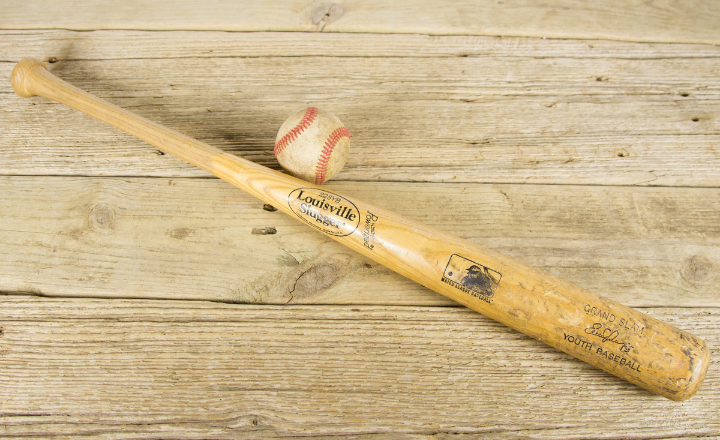Baseball bats are more than just tools for hitting; they’re an essential aspect of the game’s strategy and performance. From youth leagues to the Major Leagues, selecting the right bat can significantly impact a player’s success at the plate.
In this comprehensive guide, we delve into the intricacies of baseball bat guide, covering everything from measurements and size charts to materials and construction techniques.
1.Baseball Bat Guide- Understanding Measurements
Baseball bats are typically measured by their length and weight, two critical factors that influence a player’s swing mechanics and hitting power.
Length:
The length of a baseball bat is measured in inches from the knob to the end cap. Bats range in length from 24 to 34 inches, with longer bats generally providing extended reach and potential for greater bat speed. Longer bats may also be heavier, affecting swing control and manoeuvrability.
Weight:
Bat weight is measured in ounces and refers to the mass of the bat. Heavier bats offer more power but may sacrifice swing speed, while lighter bats provide greater bat control and manoeuvrability.
Finding the right balance between weight and swing speed is crucial for optimizing hitting performance.
2. Size Charts
Baseball bat size charts are valuable tools for determining the appropriate bat size based on a player’s height, weight, and age. These charts provide recommendations for bat length and weight, helping players find bats that suit their physical attributes and hitting preferences.
Youth Size Chart:
For youth players, size charts typically recommend bats based on height and weight ranges. These charts ensure that young players use bats that are appropriately sized and weighted for their age and skill level, promoting proper swing mechanics and development.
Adult Size Chart:
Adult size charts consider factors such as height, weight, and swing style to recommend bats that optimize performance for individual players.
These charts account for variations in swing mechanics and preferences among adult players, helping them find bats that complement their strengths and playing style.
3. Materials
Baseball bats are made from various materials, each offering unique characteristics in terms of performance, durability, and feel.
Wood:
Wooden bats, traditionally made from ash, maple, or birch, offer a classic feel and superior performance in terms of power and durability. Professional leagues typically require the use of wooden bats, with maple and birch bats gaining popularity due to their hardness and durability.
Aluminium:
Aluminium bats are lightweight and durable, offering greater forgiveness on mishits and higher exit velocities compared to wooden bats. They are popular choices for youth and amateur players due to their affordability and performance benefits.
Composite:
Composite bats are constructed from a combination of carbon fiber, fiberglass, and resin, offering a lightweight yet powerful option for hitters. These bats provide excellent trampoline effect and durability, making them popular among high-level players seeking maximum performance.
Hybrid:
Hybrid bats combine elements of both aluminium and composite materials, offering a balanced blend of performance and durability. These bats feature an aluminium barrel for added durability and a composite handle for reduced vibration and improved feel.
Understanding Bat Technology:

Understanding key elements of baseball equipment bat technology, including barrel size, taper, and grip, is essential for players looking to optimize their hitting capabilities.
The Barrel size
The barrel size of a baseball bat refers to the diameter of the hitting area. Bats with larger barrel sizes typically offer a larger sweet spot, providing hitters with a greater chance of making solid contact with the ball.
This increased contact area translates to improved power and consistency in hitting. Modern bat technology has allowed manufacturers to design bats with larger barrel sizes while maintaining a balanced swing weight, giving players the best of both worlds in terms of performance and feel.
Taper:
The taper plays a crucial role in a player’s ability to control the bat through the hitting zone. By selecting a bat with a taper that complements their swing mechanics, hitters can maximize their bat speed and adjustability, allowing for precise contact with each pitch.
The taper of a baseball bat refers to the transition area between the handle and the barrel. Taper designs vary among bats, with some featuring gradual transitions for smoother swings, while others have more pronounced tapers for added whip and power.
Grip:
The grip of a baseball bat refers to the covering on the handle that provides traction and comfort for the hitter’s hands. Grips come in various materials, thicknesses, and textures, allowing players to customize their feel at the plate.
Some grips feature specialized technologies, such as cushioning and moisture-wicking properties, to enhance comfort and reduce vibration on contact. Choosing the right grip can improve a player’s grip strength, control, and confidence during each at-bat.
Conclusion
Understanding the measurements, size charts, and materials of baseball bat guide is essential for players seeking to optimize their hitting performance. By selecting the right bat size and weight based on individual preferences and physical attributes, players can enhance their swing mechanics and maximize their power at the plate.
Choosing the appropriate bat material allows players to tailor their bat to their playing style and performance goals. Whether swinging a classic wooden bat or a cutting-edge composite model, the right bat can make all the difference in a player’s success on the baseball field.
FAQs
How do I determine the right baseball bat size for my child?
Baseball bat size for children is typically determined by their height and weight. Referencing a youth size chart can help match a bat length and weight to your child’s physical attributes, ensuring proper swing mechanics and performance.
Can I use the same baseball bat size as my favourite professional player?
While professional baseball players‘ bat sizes can serve as reference points, it’s essential to select a bat size that suits your individual physical attributes, swing mechanics, and hitting preferences.
